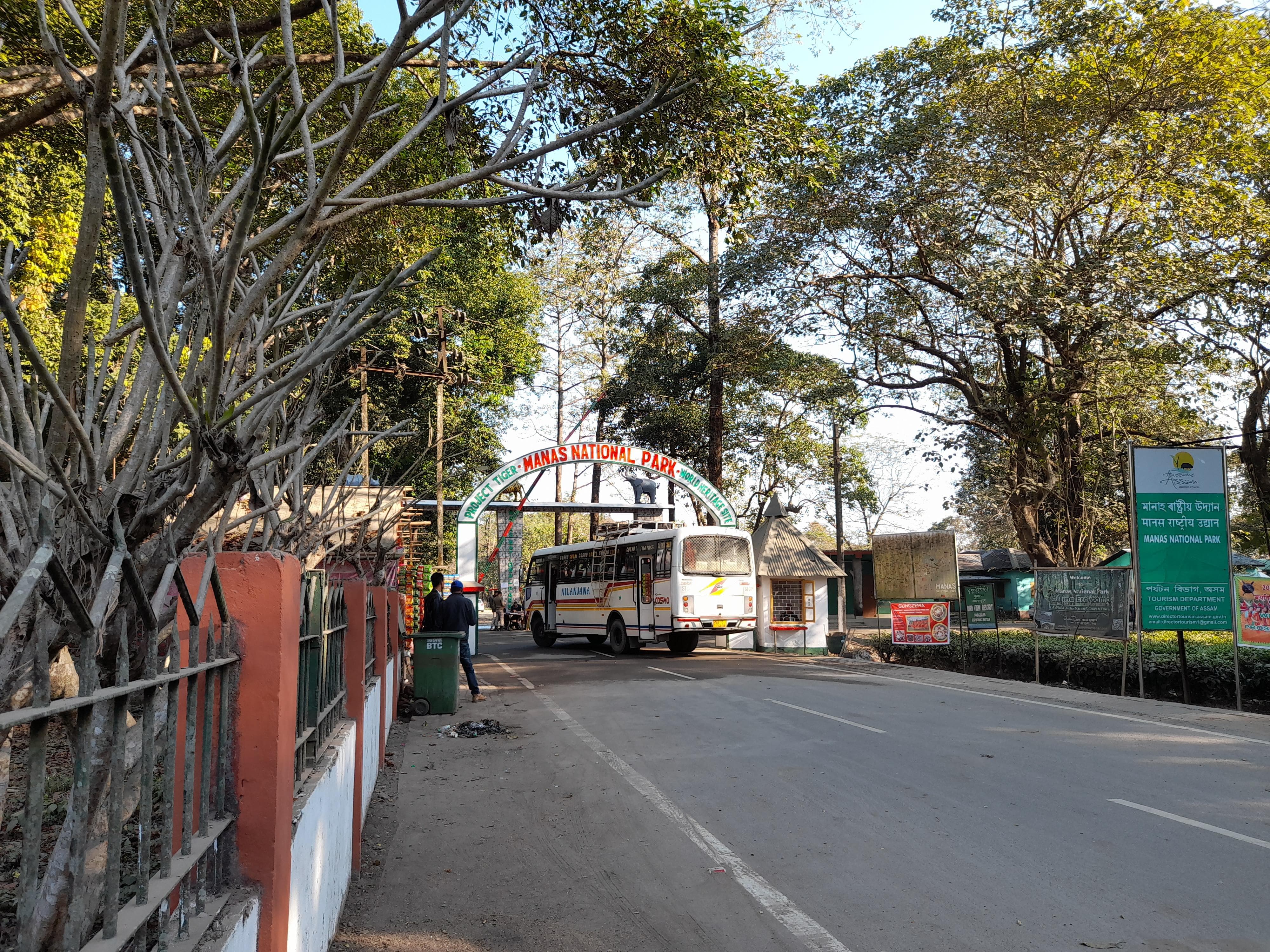|
Aceros
The rufous-necked hornbill (''Aceros nipalensis'') is a species of hornbill in Bhutan, northeastern India, especially in Arunachal Pradesh, Indian Subcontinent and Southeast Asia. It is locally extinct in Nepal due to hunting and significant loss of habitat. There are less than 10,000 adults left in the wild. With a length of about , it is among the largest Bucerotine hornbills. The underparts, neck and head are pigmented as a rich rufous in the male, but black in the female. Taxonomy The scientific name ''Buceros nipalensis'' was coined for the rufous-necked hornbill by the English naturalist Brian Houghton Hodgson in 1829 who described several rufous-necked hornbills caught by hunters in sal forests in Nepal. The species was placed in the genus ''Aceros'' by Hodgson in 1844. The authorship of the genus name has sometimes been credited to John Edward Gray but Gray was the editor not the author of the list. The genus name is from Ancient Greek ''akerōs'' meaning "hornless". ... [...More Info...] [...Related Items...] OR: [Wikipedia] [Google] [Baidu] |
Bucerotinae
Hornbills are birds found in tropical and subtropical Africa, Asia and Melanesia of the family Bucerotidae. They are characterized by a long, down-curved bill which is frequently brightly coloured and sometimes has a horny casque on the upper mandible. Hornbills have a two-lobed kidney. They are the only birds in which the first and second neck vertebrae (the atlas and axis respectively) are fused together; this probably provides a more stable platform for carrying the bill. The family is omnivorous, feeding on fruit and small animals. They are monogamous breeders nesting in natural cavities in trees and sometimes cliffs. A number of mainly insular species of hornbill with small ranges are threatened with extinction, mainly in Southeast Asia. In the Neotropical realm, toucans occupy the hornbills' ecological niche, an example of convergent evolution. Despite their close appearances, the two groups are not very closely related, with toucans being allied with the woodpeckers, ... [...More Info...] [...Related Items...] OR: [Wikipedia] [Google] [Baidu] |
Buxa Tiger Reserve
Buxa Tiger Reserve is a tiger reserve and national park in northern West Bengal, India, covering an area of . It ranges in elevation from in the Gangetic Plains to bordering the Himalayas in the north. At least 284 bird species inhabit the reserve. Mammals present include Asian elephant, gaur, Sambar deer, clouded leopard, Indian leopard, and Asian golden cat. The Bengal tiger is also present but rarely seen; as of 2005, Buxa Tiger Reserve had only one resident tiger. History Buxa Tiger Reserve was created in 1983 as the 15th tiger reserve in India. In 1986, Buxa Wildlife Sanctuary was constituted over of the reserve forests. In 1991, was added to Buxa Wildlife Sanctuary. In 1992, the Government of West Bengal declared its intentions to constitute a national park over of the Buxa Wildlife Sanctuary. State government finally declared national park with notification No.3403-For/11B-6/95 dt. 05.12.1997. Geography Location Buxa Tiger Reserve lies in Alipurduar district of ... [...More Info...] [...Related Items...] OR: [Wikipedia] [Google] [Baidu] |
Mahananda Wildlife Sanctuary
Mahananda Wildlife Sanctuary (Pron: móhɑ́nɑ́ndaa) is located on the foothills of the Himalayas, between the Teesta River, Teesta and Mahananda River, Mahananda rivers. Situated in the Darjeeling district of West Bengal, India; it comes under Darjeeling Wildlife division and can be reached from Siliguri in 30 minutes. Sukna, Darjeeling, Sukna, the gateway to the sanctuary, is only 13 km from Siliguri and 28 km from Bagdogra airport. The sanctuary sprawls over 159 km2 of reserve forest and was started as a game sanctuary in 1955. In 1959, it got the status of a sanctuary mainly to protect the Gaur, Indian bison and royal Bengal tiger, which were facing the threat of extinction. Geography The forest type in Mahananda WLS varies from riverain forests like Khayer-Sisoo to dense mixed-wet forest in the higher elevation in Latpanchar area of Kurseong hills. The variation in elevation and forest types helps the existence of a large number of species of mammals, bir ... [...More Info...] [...Related Items...] OR: [Wikipedia] [Google] [Baidu] |
Namdapha National Park
Namdapha National Park is a large national park in Arunachal Pradesh of Northeast India. The park was established in 1983. With more than 1,000 floral and about 1,400 faunal species, it is a biodiversity hotspot in the Eastern Himalayas. It harbours the northernmost lowland evergreen forest, evergreen rainforests in the world at 27°N latitude. It also harbours extensive dipterocarp forests, comprising the northwestern parts of the Mizoram-Manipur-Kachin rain forests ecoregion. It is the fourth largest national park in India. In 2024, it was declared as a Eco-Sensitive Zone. History Namdapha was originally declared a wildlife sanctuary in 1972, a national park in 1983 and became a tiger reserve under Project Tiger in the same year. Its name was a combination of two Singpho words, namely "nam" which means water, and "dapha" which means origin; The park is located between the Dapha bum range of the Mishmi Hills and the Patkai range. Geography and vegetation Namdapha Natio ... [...More Info...] [...Related Items...] OR: [Wikipedia] [Google] [Baidu] |
Kamlang Wildlife Sanctuary
The Kamlang Wildlife Sanctuary, established in 1989, is the 50th Tiger reserve in India. In 2024, it was declared as a eco-sensitive zone. The Sanctuary is rich with floral and faunal diversity. It is situated in the Lohit District of the northeastern Indian state of Arunachal Pradesh. The park is named after the Kamlang River which flows through it. The Mishmi, Digaro Mishmi, and Miju Mishmi people tribal people who reside around the periphery of the sanctuary claim their descent from the King Rukmo of the epic Mahabharata. They believe in a myth of an invisible god known as ''Suto Phenkhenynon jamalu''. An important body of water in the sanctuary is the Glow Lake. Located in tropical and sub-tropical climatic zones, the sanctuary is the habitat of the four big cat species of India: tiger, leopard, clouded leopard and snow leopard. Topography The sanctuary is in the South-Eastern part of Lohit District. Established in 1989, it covers an area of . The Lang River forms its no ... [...More Info...] [...Related Items...] OR: [Wikipedia] [Google] [Baidu] |
Sessa Orchid Sanctuary
Sessa Orchid Sanctuary is a 100 km2 protected area of India in the Himalayan foothills in Bhalukpong Forest Division of West Kameng District, Arunachal Pradesh. It conjoins Eaglenest Wildlife Sanctuary to the southwest. It is a part of the Kameng Protected Area Complex (KPAC), which is an Elephant Reserve.See map The department of Environment & Forests has developed trekking routes for visitors to enjoy the natural habitats of orchids. There are deep gorges and valleys, high peaks and rugged terrain that are rewarding for nature lovers and adventure tourists. A nursery includes representative specimens of various orchid species of the sanctuary and a demonstration farm of Cymbidium hybrids for cut-flower production. Most of Sessa has traditionally been claimed by the Bugun tribe as part of their territory. Geography and climate Sessa and Eaglenest together occupy a rough east–west rectangle with Sessa occupying the north-east quadrant. The Bhalukpong-Bomdila highway (an ... [...More Info...] [...Related Items...] OR: [Wikipedia] [Google] [Baidu] |
Northeast India
Northeast India, officially the North Eastern Region (NER), is the easternmost region of India representing both a geographic and political Administrative divisions of India, administrative division of the country. It comprises eight States and union territories of India, states—Arunachal Pradesh, Assam, Manipur, Meghalaya, Mizoram, Nagaland and Tripura (commonly known as the "Seven Sisters"), and the "brother" state of Sikkim. The region shares an international border of 5,182 kilometres (3,220 mi) (about 99 per cent of its total geographical boundary) with several neighbouring countries – it borders China to the north, Myanmar to the east, Bangladesh to the south-west, Nepal to the west, and Bhutan to the north-west. It comprises an area of , almost 8 per cent of that of India. The Siliguri Corridor connects the region to the Mainland India, rest of mainland India. The states of North Eastern Region are officially recognised under the North Eastern Council (NEC), co ... [...More Info...] [...Related Items...] OR: [Wikipedia] [Google] [Baidu] |
Eaglenest Wildlife Sanctuary
Eaglenest or Eagle's Nest Wildlife Sanctuary is a Protected areas of India, protected area of India in the Himalaya#Midlands, Himalayan foothills of West Kameng District, Arunachal Pradesh. It conjoins Sessa Orchid Sanctuary to the northeast and Pakhui Tiger Reserve across the Kameng river to the east. Altitude ranges are extreme: from to . It is a part of the Kameng Elephant Reserve. Eaglenest is notable as a prime birding site due to the extraordinary variety, numbers and accessibility of species. Eaglenest derives its name from 4th Infantry Division (India), Red Eagle Division of the Indian army which was posted in the area in the 1950s. Geography and climate Eaglenest and Sessa Orchid Sanctuary together occupy a rough east–west rectangle with Sessa occupying the northeast quadrant. Eaglenest is bounded to the north by Eaglenest Ridge and the reserved forests of the Bugun community (Lama Camp area). Eaglenest adjoins Tawang district to the north. The Bhalukpong–Bomdi ... [...More Info...] [...Related Items...] OR: [Wikipedia] [Google] [Baidu] |
Manas National Park
Manas National Park is a national park, Project Tiger reserve, and an elephant reserve in Assam, India. Located in the Himalayan foothills, it borders the Royal Manas National Park in Bhutan. The park is known for its rare and endangered endemic wildlife such as the Assam roofed turtle, hispid hare, golden langur and pygmy hog. It also hosts the only known population of Pygmy hog, pygmy hogs in the world. Manas is also famous for its population of the wild water buffalo. Because of its exceptional biodiversity, scenery, and variety of habitats, Manas National Park is a Biosphere Reserve, biosphere reserve and a UNESCO World Heritage Site. Origin of the name The name of the park is originated from the Manas River. The Manas river is a major tributary of Brahmaputra River, which passes through the heart of the national park. History The area today consisting of the Manas National Park was under the Kingdom of Bhutan till the Duar War of 1865 when it was ceded to British Ind ... [...More Info...] [...Related Items...] OR: [Wikipedia] [Google] [Baidu] |
Pakke Tiger Reserve
Pakke Tiger Reserve, is a Project Tiger Tiger reserves of India, reserve in the East Kameng district of Arunachal Pradesh in Northeast India. The reserve is protected by the Department of Environment and Forest of Arunachal Pradesh. It was known as Pakhui Tiger Reserve, but renamed in April 2001 by the Governor of Arunachal Pradesh. It has won India Biodiversity Award 2016 in the category of 'Conservation of threatened species' for its Hornbill Nest Adoption Programme. Location Pakke Wildlife Sanctuary lies in the undulating and hilly foothills of the Eastern Himalayas in Arunachal Pradesh's Pakke Kessang District at elevations ranging from . It is bounded by Bhareli or Kameng River in the west and north, and by Pakke River in the east. It is surrounded by contiguous forests on most sides. To the east lies Papum Reserve Forest with an area of . Towards the south and south-east, the sanctuary adjoins reserve forests and Assam's Nameri National Park. To the west, it is bounded by ... [...More Info...] [...Related Items...] OR: [Wikipedia] [Google] [Baidu] |






